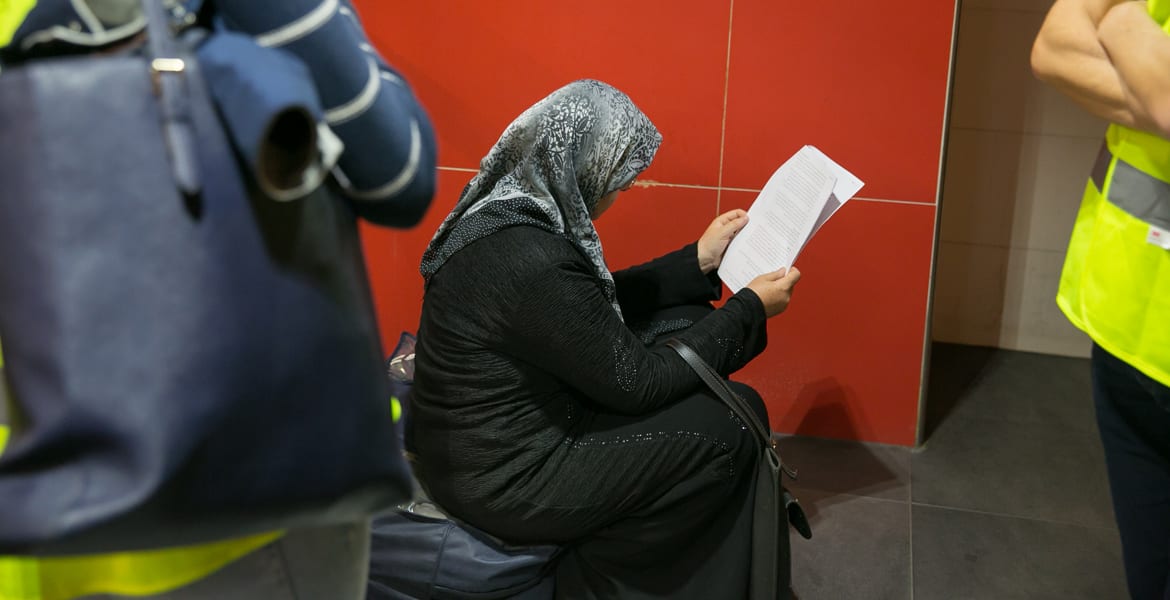With proposals for mass deportations, citizenship reviews, and extensive bans on Islamic expressions, the Danish People's Party (Dansk Folkeparti) is campaigning on an immigration policy that is very radical by Nordic standards.
— We must get Denmark back. A Denmark where there are no headscarves in schools. Where Danish is spoken in nursing homes. Where Danes are once again masters in their own house, argues party leader Morten Messerschmidt.
The DF notes that the demographic composition of Denmark has changed drastically since the 1980s, when the proportion of residents with non-Western backgrounds was 1 percent. Today, 10.1 percent of the population, equivalent to over 500,000 people, have non-Western origins.
The party particularly points to immigration from the Middle East and North Africa – including from Turkey, Syria, Iraq, Lebanon, Pakistan, Afghanistan, and Somalia – as the cause of the country's extensive social problems.
In the manifesto, a series of negative consequences are listed: ghetto formation, ethnic conflicts, radicalization, clan cultures, honor violence, social control, persecution of Jews and sexual minorities, infiltration of public authorities, Islamic censorship, and gender segregation. The DF claims this constitutes "the largest demographic change in Danish history".
"Immigration from the Middle East and North Africa in particular brings a lot of crime and is fundamentally changing our country. If you do not want to adopt Danish culture and Danish values, the Danish People's Party will work to ensure that you stay somewhere else", it states.
Citizenship review
The program contains proposals that go significantly further than current Danish legislation. The DF wants to review all citizenships granted over the past two decades. For those who received citizenship in the past eight years, new language and citizenship tests should be introduced. Those who fail the tests should lose their Danish citizenship.
Criminals should also lose their citizenship, and the party wants Denmark to try to leave or renegotiate international agreements that limit the ability to make people stateless.
To enforce deportations, the DF wants to use economic pressure against countries that oppose receiving their citizens. Aid should be withdrawn and economic sanctions imposed. The party proposes that a special ministry for returns should be established.
Those who accept financial support to leave Denmark should be banned from ever returning. Border controls should be made permanent and strengthened.
Restrictions on Islam
The DF's program also includes a series of measures specifically targeting Islam and Muslims. The party wants to ban or heavily tax halal products, stop foreign financing of mosques, and withdraw state recognition of Islamic religious communities.
Domestically, the party wants to ban the call to prayer, prohibit headscarves in public buildings, and shut down Muslim independent schools. Permanent residence permits should only be granted to persons of Danish origin. Foreign citizens whom police list as gang members should be deported.
"Remigration now"
Messerschmidt has intensified his criticism of Danish Prime Minister Mette Frederiksen's immigration policy in recent weeks, which he calls "the great immigration fiasco".
"We must have Denmark back. A Denmark where there are no scarves in schools. Where Danish is spoken in nursing homes. Where the Danes are masters of their own house again. The most important issue of all is the issue of repatriations. That is why we need a remigration policy", Messerschmidt wrote on social media last week.
In another post, he claimed that immigration has increased sharply during Frederiksen's time as prime minister:
"REMIGRATION AND HOME SHIPMENTS NOW! Since Mette Frederiksen became Prime Minister, Islamic mass immigration has increased by a staggering 124 percent. In fact, she has allowed as many as 40,000 Islamic foreigners into our country since she came to power in 2019".




